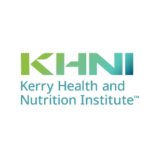Nutrition and immunity can be a difficult space to navigate. Vitamin C, zinc, probiotics, beta glucans, and selenium are among the most common nutrients or ingredients used for supporting immune health. Supporting immunity with functional ingredients is top-of-mind for many people around the world, but how do you know which ingredients and nutrients are actually effective and supported by science? Our resources on this page are science-based summaries of all you might want to know about nutrition and immunity.
Updated: This podcast from Dr. Beth Olson on Well Wisconsin Radio provides some great background on the link between nutrition and immunity and can serve as an introduction to the topic for readers less familiar with how the immune system works.
Nutrition and immunity: roles of individual nutrients

Different nutrients support immunity in different ways. Learn more about how each nutrient works with the immune system, whether people get enough of each nutrient, and what foods can support immunity.
How does the immune system work?

The immune system is the body’s way of protecting itself from infection by foreign invaders like bacteria and viruses. It helps the body stay healthy instead of getting sick, and get better when we do get sick.
The innate immune system: When pathogens like infectious bacteria or viruses get into our respiratory tract or gastrointestinal system, the innate immune system responds by sending cells like neutrophils or macrophages to remove the threat. These cells attempt to swallow up the invading pathogen or create enzymes to destroy the pathogen.
The adaptive immune system is sometimes described as the ‘memory’ of our immune system. Once we are exposed to a pathogen, our immune system can remember the identity of that pathogen for the future and quickly mount a defense specific to that pathogen.
These resources provide a great overview of how the immune system works:
Immune System, What’s Your Function?
What are Immunomodulators and How Do They Work?
How Can Nutrition Address the Immune Health Needs of Today’s Consumer? (Webinar)
How age and exercise impact immune health

Immune health becomes especially important in vulnerable age groups, like infants and the elderly. Stress, such as from over-exercising, can also compromise the immune system. These resources provide a deeper dive into the effects certain conditions or life stages can have.
Exercise and the Immune System
The Role of Food in Maintaining Immune Health in Ageing
Immune Health for Infants and Toddlers

 We bring the voice of science to some of the most challenging questions facing the food and beverage industry day to day through our network of over 1000 Kerry scientists, external collaborators, and our Scientific Advisory Council. Our content comes straight from scientists and experts in nutrition, taste, food, and sensory sciences to make sure we are providing up-to-date, credible information to guide people shaping the future of food.
We bring the voice of science to some of the most challenging questions facing the food and beverage industry day to day through our network of over 1000 Kerry scientists, external collaborators, and our Scientific Advisory Council. Our content comes straight from scientists and experts in nutrition, taste, food, and sensory sciences to make sure we are providing up-to-date, credible information to guide people shaping the future of food. 

